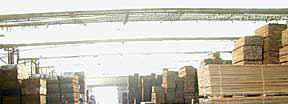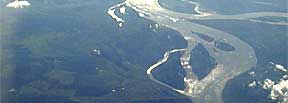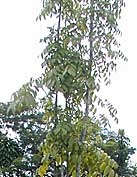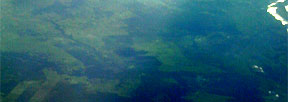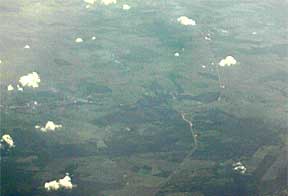Mahogany Outlook
HOME ORDER ONLINE PRODUCTS REGISTER CONTACT US

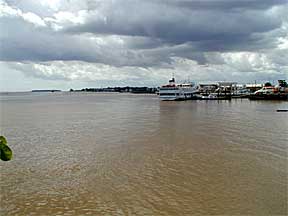
At the mouth of the Amazon in Belem. The mahogany port of export.
Jan. 2002 (and updated from time to time)
In October 2001, Brazil banned export of mahogany. This isn't too surprising, since it's been on the CITES II Appendix for a number of years and for an equal number of years many have argued and urged to have it placed on Appendix I (the same appendix that Brazilian rosewood is on).
Several environmental organizations, including Greenpeace, have been monitoring the harvesting of mahogany and have enough proof of illegal cutting that IBAMA (Brazil's watchdog agency, that monitors cutting and export of Brazilian woods) decided to shut down its export altogether. There are areas that have been designated as logging areas, but many areas of Amazonas where the treasured wood (known as Amazon gold) is being logged are in forest preserves or in lands set aside for native populations. Although the mahogany is not supposed to be logged from these lands, for some of these cultures it is one of the few means of getting currency. Of course, there is a strong argument that says that if the local populations have control over what is extracted from their lands that there is a built in incentive to preserve what they have for the future. But in the case of mahogany trees, for the most part, they are paid so little for a tree that the incentive to preserve does not exceed their need for hard currency.
Since something like 95% of mahogany (Swietenia macrophylla) has been coming from Brazil, this places major pressure on other sources for mahogany. Mahogany does come out of Central America and southern Mexico, and does not carry the same restrictions (pre-ban) that Brazilian mahogany did. Mahogany also comes from Peru, but much of this is from the forests of Brazil's Amazonas and Rondonia regions. India can export mahogany (also S. macrophylla) that was planted there in colonial times, but there are size restrictions.
At the time of this writing our local, Bay Area supplier was charging about $4.75 bf, and now is charging $13.35. And we have brokered containers of mahogany to guitar manufacturers at the rate of $3.75 in 2001 to a current $5.65. The next containers later this year (2006) will be at least a dollar more. Based on a simple notion - something they call supply and demand - prices will undoubtedly continue upward!
Left, the city of Belem with Amazon river visable in the background.

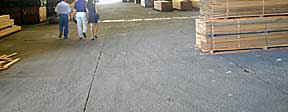
There are many large warehouses like this in Belem filled with mahogany. These stacks are left from last year's harvest, and this photo was taken at the beginning of the season (May 2001).
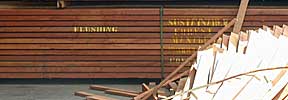
The specifically dimensioned boards have the words "FLUSHING, NY", and "Sustainable Forest Product, IBAMA Controlled" painted on the edges.

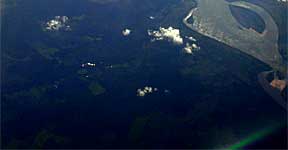

Near left, me standing next to a young mahogany tree.
Counter clockwise, flying out of Belem, the futher away from Belem the more forest destruction it seemed.
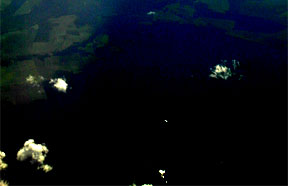
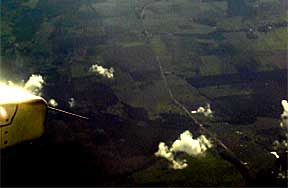
Address General Information Sales/support Telephone: 707-431-3760 POB 217, 101 C Grant Avenue, Healdsburg, Ca. 95448 USA info@alliedlutherie.com sales@alliedlutherie.com Fax:
707-431-3762 AAAA
